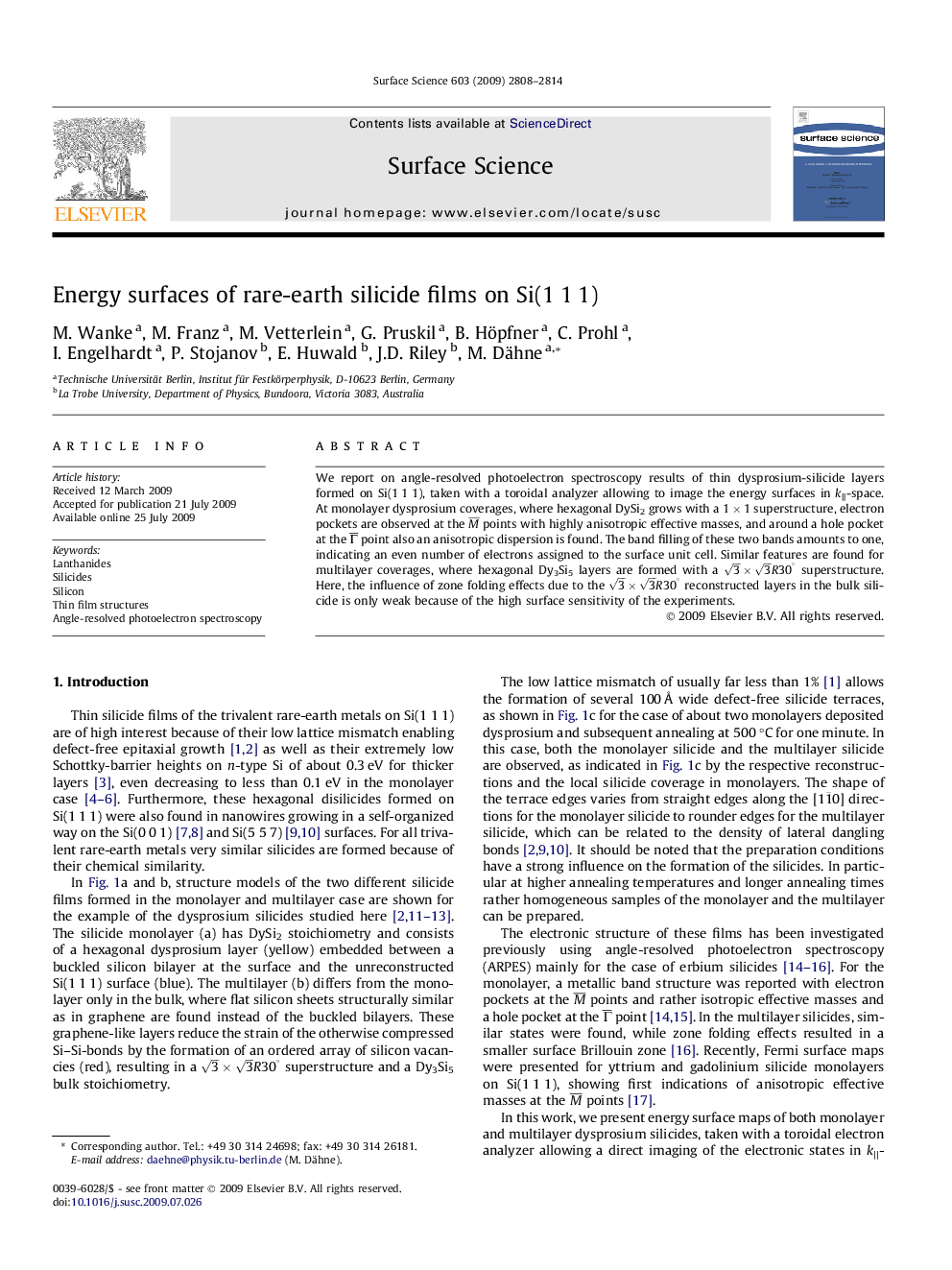| Article ID | Journal | Published Year | Pages | File Type |
|---|---|---|---|---|
| 5424064 | Surface Science | 2009 | 7 Pages |
Abstract
We report on angle-resolved photoelectron spectroscopy results of thin dysprosium-silicide layers formed on Si(1 1 1), taken with a toroidal analyzer allowing to image the energy surfaces in k||-space. At monolayer dysprosium coverages, where hexagonal DySi2 grows with a 1Ã1 superstructure, electron pockets are observed at the M¯ points with highly anisotropic effective masses, and around a hole pocket at the ί point also an anisotropic dispersion is found. The band filling of these two bands amounts to one, indicating an even number of electrons assigned to the surface unit cell. Similar features are found for multilayer coverages, where hexagonal Dy3Si5 layers are formed with a 3Ã3R30° superstructure. Here, the influence of zone folding effects due to the 3Ã3R30° reconstructed layers in the bulk silicide is only weak because of the high surface sensitivity of the experiments.
Related Topics
Physical Sciences and Engineering
Chemistry
Physical and Theoretical Chemistry
Authors
M. Wanke, M. Franz, M. Vetterlein, G. Pruskil, B. Höpfner, C. Prohl, I. Engelhardt, P. Stojanov, E. Huwald, J.D. Riley, M. Dähne,
